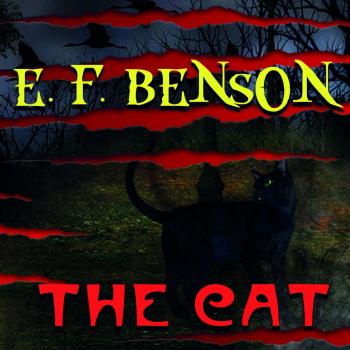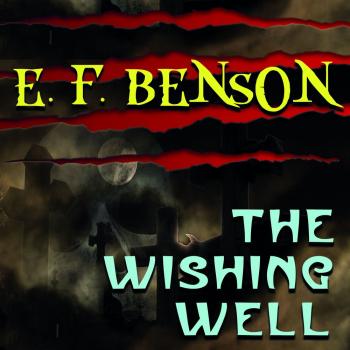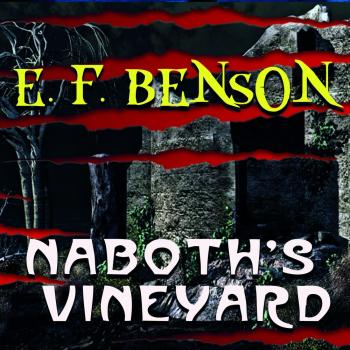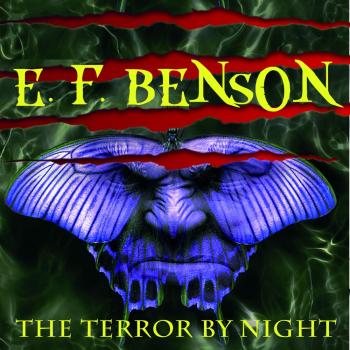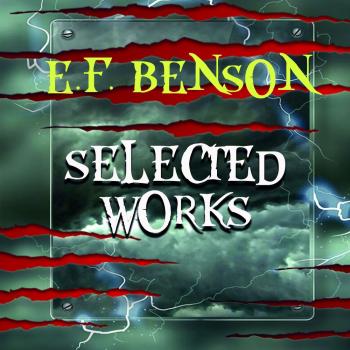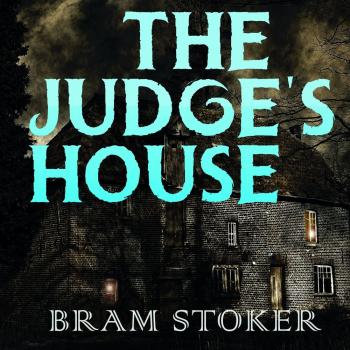Мультимедийное издательство Стрельбицкого
Все книги издательства Мультимедийное издательство СтрельбицкогоThe Cat
Edward Frederic Benson (1867-1940) was an English novelist, biographer, memoirist, archaeologist, and short story writer, best known for his evocative and beautifully narrated ghost and horror stories. In his own day it was his ghost stories which were his most popular works. Among the most significant works Edward Benson: And the dead Spoke…, The Outcast, Machon, Negotium Perambulans…, Inscrutable Decrees, The Gardener, Mr Tilly's Seance, Mrs Amworth, In the Tube, Roderick's Story, The Horror Horn, Mapp and Lucia series, Dodo series, The Inheritor, Secret Lives, Naboth's Vineyard, At the Farmhouse, The Wishing Well, The Terror by Night, The Thing in the Hall, The Cat, The Sanctuary and many more.
The Wishing-Well
Edward Frederic Benson (1867-1940) was an English novelist, biographer, memoirist, archaeologist, and short story writer, best known for his evocative and beautifully narrated ghost and horror stories. In his own day it was his ghost stories which were his most popular works. Among the most significant works Edward Benson: And the dead Spoke…, The Outcast, Machon, Negotium Perambulans…, Inscrutable Decrees, The Gardener, Mr Tilly's Seance, Mrs Amworth, In the Tube, Roderick's Story, The Horror Horn, Mapp and Lucia series, Dodo series, The Inheritor, Secret Lives, Naboth's Vineyard, At the Farmhouse, The Wishing Well, The Terror by Night, The Thing in the Hall, The Cat, The Sanctuary and many more.
Naboth's Vineyard
"Naboth's Vineyard" exemplifies E. F. Benson's fine literary style and his ability to create the most frightening of supernatural and macabre tales. This story takes it title from a story in the Old Testament Book of Kings starring Ahab and his infamous wife Jezebel. Ahab wants Naboth’s vineyard and Naboth refuses to sell. The update is not about a vineyard, but a home. The Ahab here is a wily lawyer named Ralph and a client whom he failed to protect from charges of embezzlement. Ralph desperately wants the house and uses his knowledge of the other man to press the matter; a circumstance which almost immediately results in the other man’s death by heart attack. The second half of the story is the delivery of a little Old Testament-style ironic retributive justice from the afterlife proving that revenge really is a dish best served when your corpse is cold. Among the most significant works Edward Frederic Benson: And the dead Spoke…, The Outcast, Machon, Negotium Perambulans…, At the Farmhouse, Inscrutable Decrees, The Gardener, Mr Tilly's Seance, Mrs Amworth, In the Tube, Roderick's Story, The Horror Horn, The Mapp and Lucia, The Inheritor, Secret Lives, Naboth's Vineyard, At the Farmhouse, The Wishing-Well, The Terror by Night, The Thing in the Hall, The Cat, The Sanctuary.
At the Farmhouse
Edward Frederic Benson (1867-1940) was an English novelist, biographer, memoirist, archaeologist, and short story writer, best known for his evocative and beautifully narrated ghost and horror stories. At the Farmhouse – tells the story of a landscape painter, who after twenty years of hideous marriage to an abusive and drunken local woman who is rumoured to be a witch, sets off to murder her. In his pocket is a ball of strong twine with which he will strangle her, and a box of matches with which he will set light to the farmhouse to destroy the evidence of his crime. After that he will be free…What happens when he reaches the farmhouse is gruesome, uncanny and totally unexpected. Among the most significant works Edward Benson: And the dead Spoke…, The Outcast, Machon, Negotium Perambulans…, At the Farmhouse, Inscrutable Decrees, The Gardener, Mr Tilly's Seance, Mrs Amworth, In the Tube, Roderick's Story, The Horror Horn, The Mapp and Lucia, The Inheritor, Secret Lives, Naboth's Vineyard, At the Farmhouse, The Wishing-Well, The Terror by Night, The Thing in the Hall, The Cat, The and many more.
The Terror by Night
Edward Frederic Benson (1867-1940) was an English novelist, biographer, memoirist, archaeologist, and short story writer, best known for his evocative and beautifully narrated ghost and horror stories. In his own day it was his ghost stories which were his most popular works. The Terror by Night—the first volume in the series—covers the period between 1899 and 1911, and demonstrates Benson's early mastery of his craft, in such stories as 'Caterpillars', 'The Man Who Went Too Far', 'Gavon's Eve', and 'The Bus-Conductor', the basis for one of the stories in the classic supernatural film Dead of Night. The Terror by Night is a short horror story published in 1912. The Terror by Night is a part of a short story collection «„The Room in the Tower and Other Stories“» also published in 1912. Among the most significant works Edward Benson: And the dead Spoke…, The Outcast, Machon, Negotium Perambulans…, At the Farmhouse, Inscrutable Decrees, The Gardener, Mr Tilly's Seance, Mrs Amworth, In the Tube, Roderick's Story, The Horror Horn, Mapp and Lucia series, Dodo series, The Inheritor, Secret Lives, Naboth's Vineyard, The Wishing-Well, The Terror by Night, The Thing in the Hall, The Cat, The Sanctuary and many more.
Selected works of E.F. Benson
Edward Frederic Benson (1867-1940) was an English novelist, biographer, memoirist, archaeologist, and short story writer, best known for his evocative and beautifully narrated ghost and horror stories. In his own day it was his ghost stories which were his most popular works. The following works are included in the Selected of works Edward Frederic Benson: Mrs. Amworth, Negotium Perambulans…, Naboth's Vineyard, At the Farmhouse, The Wishing-Well, The Terror by Night, The Thing in the Hall, The Cat, The Sanctuary.
Grimm’s Fairy Tales (20 tales)
Grimms' Fairy Tales, originally known as the Children's and Household Tales, is a collection of fairy tales by the Grimm brothers or «Brothers Grimm», Jakob and Wilhelm, first published on 20 December 1812. The first edition contained 86 stories, and by the seventh edition in 1857, had 210 unique fairy tales. Encouraged by Arnim, they published their collected tales as the Kinder- und Hausmärchen, implying in the title that the stories were meant for adults and children alike. In contrast to the extravagant fantasy of the Romantic school’s poetical fairy tales, the 200 stories of this collection (including, among the most enduring, “Snow White,” “Little Red Riding Hood,” “Sleeping Beauty,” “Rumpelstiltskin”, «Twelve Dancing Princesses», «The Dog And The Sparrow», «The Fisherman and His Wife», «The Frog Prince», «The Willow-Wren and The Bear», «Hansel and Gretel», «Mother Holle», «Tom Thumb») aimed at conveying the soul, imagination, and beliefs of people through the centuries—or at a genuine reproduction of the teller’s words and ways. Most of the stories were taken from oral sources, though a few were from printed sources. The great merit of Wilhelm Grimm is that he gave the fairy tales a readable form without changing their folkloric character. The results were threefold: the collection enjoyed wide distribution in Germany and eventually in all parts of the globe; it became and remains a model for the collecting of folktales everywhere; and the Grimms’ notes to the tales, along with other investigations, formed the basis for the science of the folk narrative and even of folklore.
The Luck of Roaring Camp
"The Luck of Roaring Camp" is a short story by American author Bret Harte. It was first published in the August 1868 issue of the Overland Monthly and helped push Harte to international prominence. The story is about the birth of a baby boy in a 19th-century gold prospecting camp. The boy's mother, Cherokee Sal, dies in childbirth, so the men of Roaring Camp must raise it themselves. Believing the child to be a good luck charm, the miners christen the boy Thomas Luck. Afterwards, they decide to refine their behavior and refrain from gambling and fighting. At the end of the story, however, Luck and a villager, Kentuck, perish in a flash flood that strikes the camp. Roaring Camp was a real place. It was a goldmining settlement on the Mokelumne River in Amador County, California. It was home to forty-niners seeking gold in and around the river; it is now a privately owned tourist attraction. The story's flood theme may have been inspired by California's Great Flood of 1862, which Harte witnessed.
The Judge's House
"The Judge's House" is a classic ghost story by the Irish author Bram Stoker. The story was first published in the December 5, 1891, special Christmas issue of the Illustrated Sporting and Dramatic News weekly magazine. It was later republished in Dracula's Guest and Other Weird Stories (1914). The short story has since appeared in many anthologies. In the story, a student arrives in a small town looking for a quiet place to stay while preparing for his examination. Making light of the local superstitions, he moves into an old mansion where a notorious hanging judge once lived. He is comfortably settled and engrossed in his work when, in the middle of the night, he is visited by an enormous rat with baleful eyes. As soon as the giant rat appears, other rats that infest the old house fall silent. When the great rat returns on the second night, the student begins to feel uneasy. He soon learns why the locals fear the Judge's House. Famous works of the author: Krishtale Chalice, The Primrose Path, Obligations of Other Clerks in Ireland, The Snake's Pass, Dracula, The Mystery of the Sea, The Jewel of Seven Stars, Private Hear about Henry Irving, The Lady of the Shroud, The Lair of the White Worm
Up From Slavery
Up from Slavery is the 1901 autobiography of American educator Booker T. Washington (1856–1915). The book describes his personal experience of having to work to rise up from the position of a slave child during the Civil War, to the difficulties and obstacles he overcame to get an education at the new Hampton Institute, to his work establishing vocational schools—most notably the Tuskegee Institute in Alabama—to help black people and other disadvantaged minorities learn useful, marketable skills and work to pull themselves, as a race, up by the bootstraps. He reflects on the generosity of both teachers and philanthropists who helped in educating blacks and Native Americans. He describes his efforts to instill manners, breeding, health and a feeling of dignity to students. His educational philosophy stresses combining academic subjects with learning a trade (something which is reminiscent of the educational theories of John Ruskin). Washington explained that the integration of practical subjects is partly designed to reassure the white community as to the usefulness of educating black people. This book was first released as a serialized work in 1900 through The Outlook, a Christian newspaper of New York. This work was serialized because this meant that during the writing process, Washington was able to hear critiques and requests from his audience and could more easily adapt his paper to his diverse audience. In 1998, the Modern Library listed the book at No. 3 on its list of the 100 best nonfiction books of the 20th century, and in 1999 it was also listed by the conservative Intercollegiate Review as one of the «50 Best Books of the Twentieth Century». Famous works of the author Booker T. Washington compilations of speeches and essays: The Story of My Life and Work, Up from Slavery, The Story of the Negro: The Rise of the Race from Slavery, My Larger Education, The Man Farthest Down.
